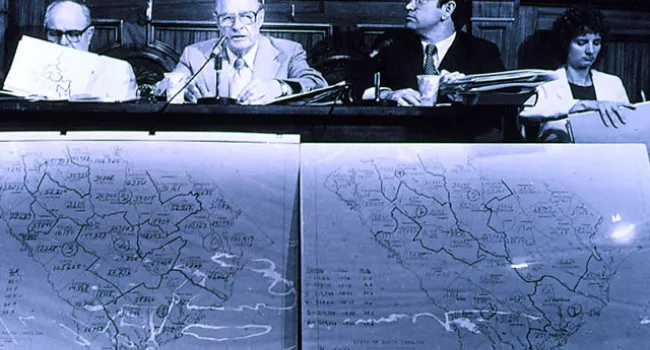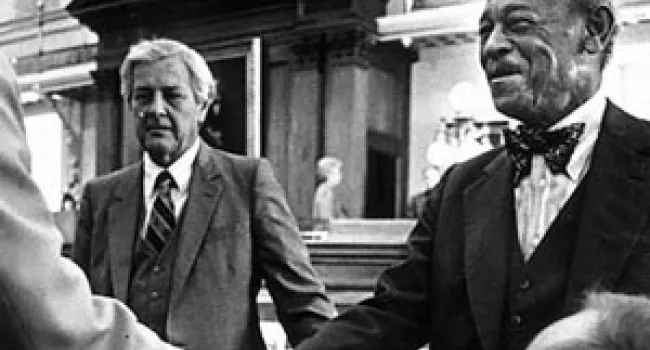
The power and right of African-Americans to vote, guaranteed by the Federal Voting Rights Act of 1965, has been a major driving force behind many of the economic, political, and educational gains made by the African-American community in recent years. Here, a long line of African-American and white voters wait in line in Columbia to vote. November 4, 1980, photo by Steve Hunt.
Courtesy of "The State" newspaper.
Standards
- This indicator was developed to promote inquiry into how the lifestyles of those living in capitalist countries differed from those living in communist countries. This indicator was also designed to promote inquiry into how the rights of citizens differed in capitalist and communist countries.
- This indicator was designed to foster inquiry into the role of South Carolina in the Modern Civil Rights Movement, to include the influence of court cases such as Briggs v. Elliot and Flemming v. South Carolina Electric and Gas. This indicator was also developed to promote inquiry into the relationship between national leadership, protests, and events and South Carolina leadership, protests and events, such as the Friendship Nine and the Orangeburg Massacre.







